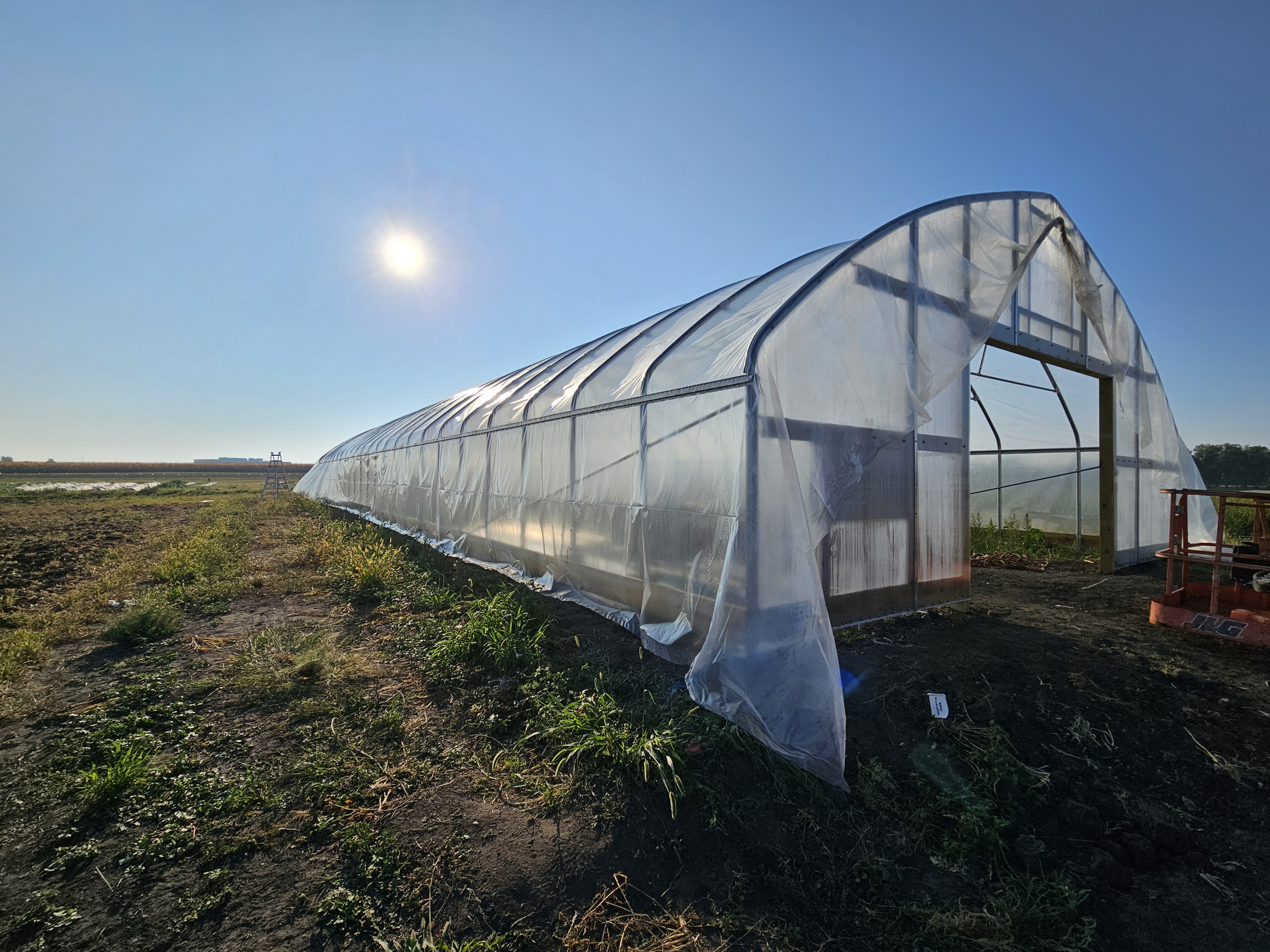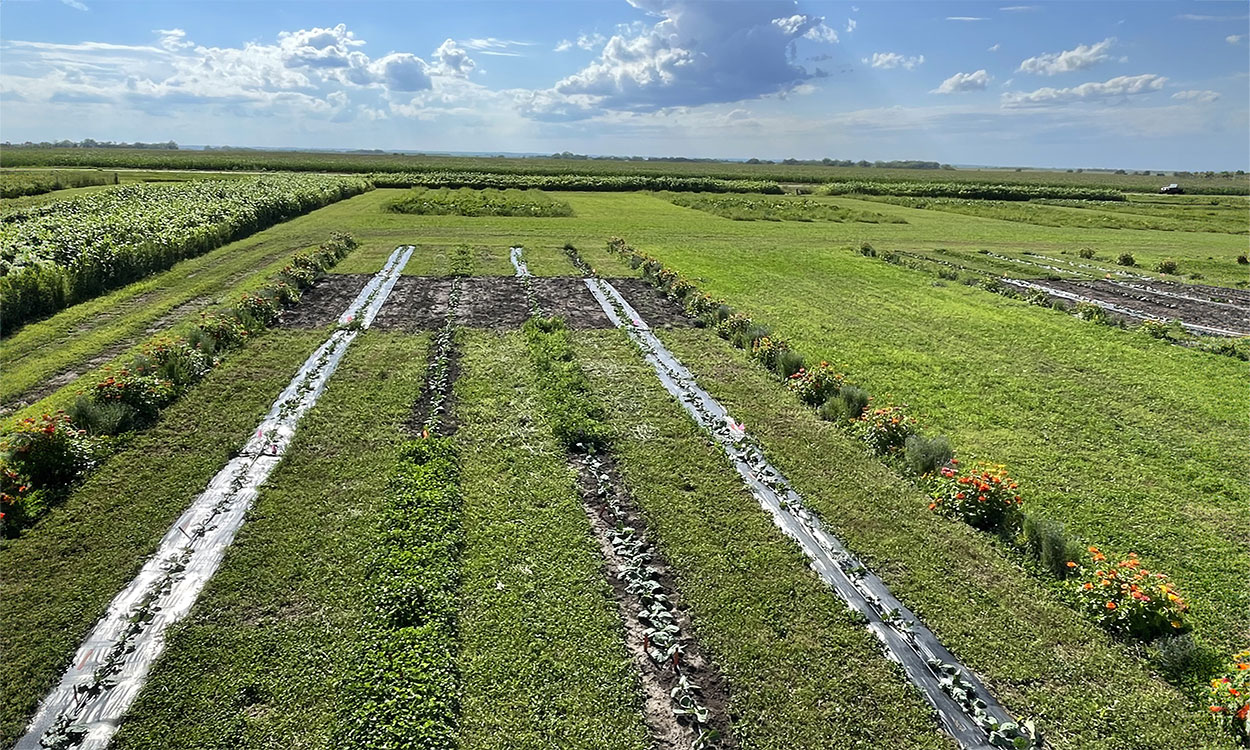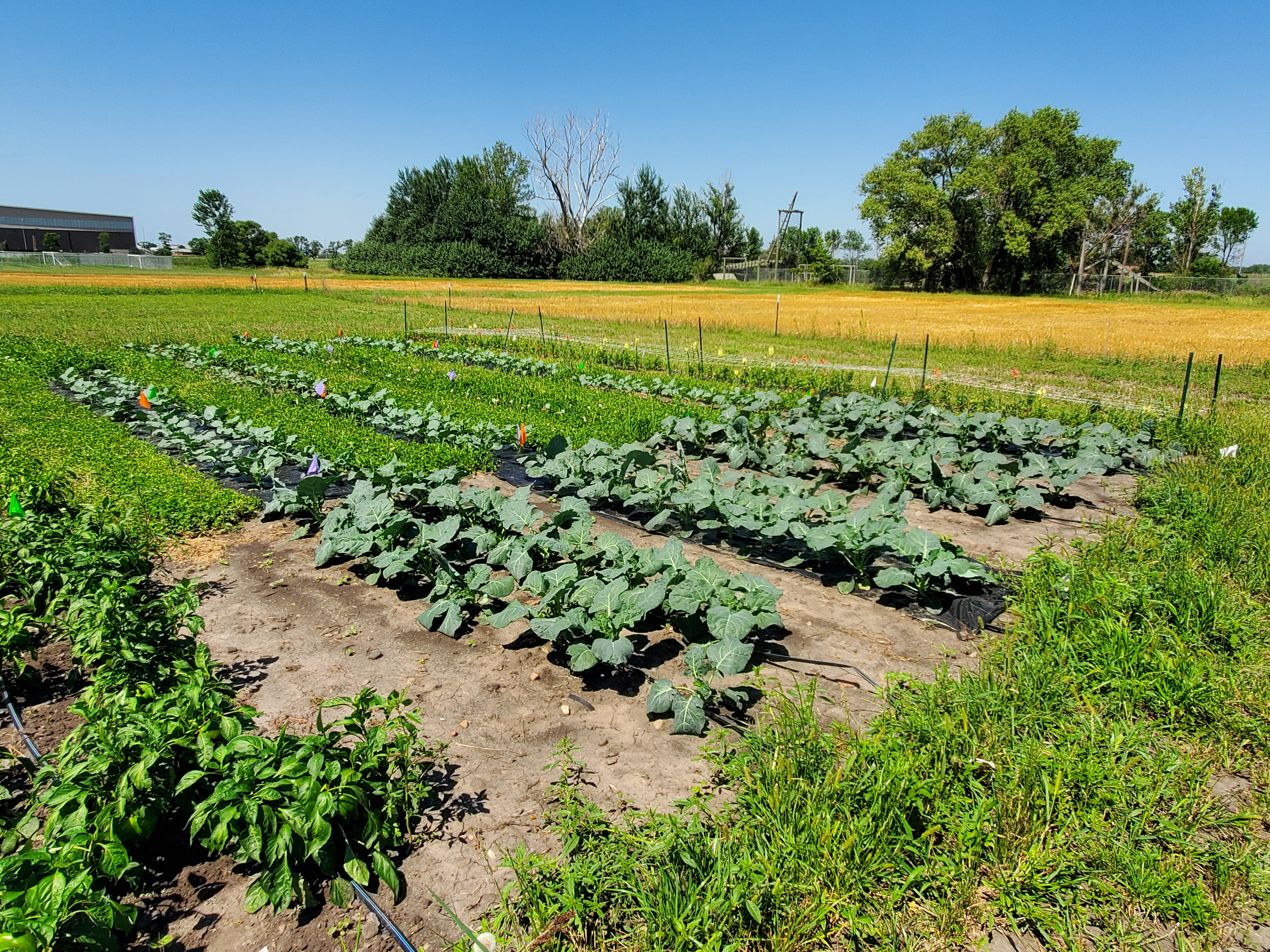Description
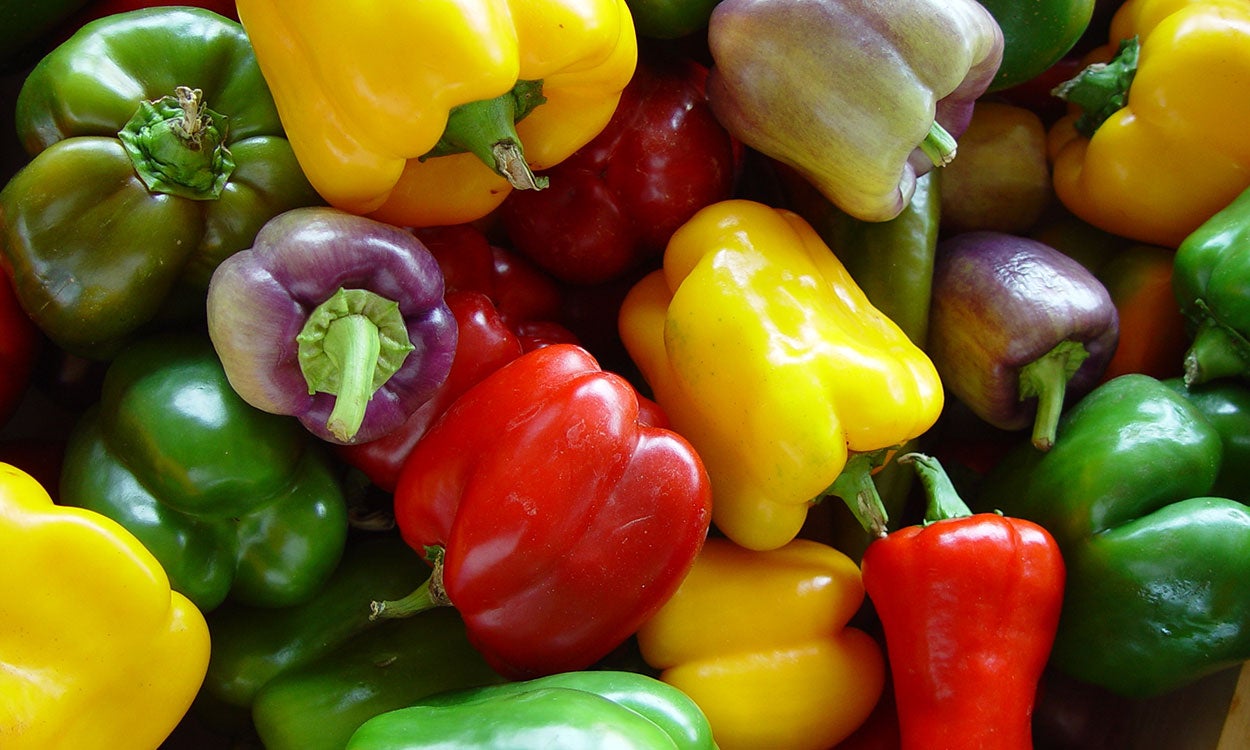
General Description: Peppers are heat-loving vegetables that require a long, frost-free season and full sun. Peppers originated in Central and South America, and they were one of the first plants cultivated there up to 5,000 years ago.
Types: Peppers can be sweet or hot, and range in color from green, yellow, orange, red, and purple to brown (All bell peppers are green to start with and turn color, sweeten and increase in vitamin content as they mature). Sweet peppers include banana, bell, cherry and pimiento types. Hot peppers include ancho, chile, habañero, jalapeño and serrano types.
Fun Fact: The characteristic odor of green peppers is one that can be detected at one part per trillion, making it one of the most intense scents on earth! This unusual flavor compound can sometimes be detected in wines, lending an herbal note to varieities, such as Sauvignon Blanc, Merlot and others.
Hot Peppers

Capsaicin is the substance that makes hot peppers hot. It is concentrated in the membrane that holds the seeds. Removing this membrane and the seeds before cooking will reduce the hotness considerably.
If you accidentally bite into a hot pepper, drinking a glass of water will not help. Instead drink milk or eat a piece of cheese.
Capsaicin is put to good use in pain-relieving creams, which can temporarily overwhelm and effectively shut down nearby pain sensors in the body. Just be careful not to rub your eyes after handling these preparations!
Chili peppers or other hot peppers will tend to have higher levels of capsaicin if the plant is stressed after the fruit is set on the plant. For example, drought will tend to create hotter peppers.
Planting

Timeline: Pepper seeds are started indoors and transplanted outdoors. Start pepper seeds about 8 weeks before transplant (Figure 3). Reduce fertilizer and water a few days before transplanting to harden the plants off, and the gradually expose them to sun. Days to harvest range from 65 to 85 days.
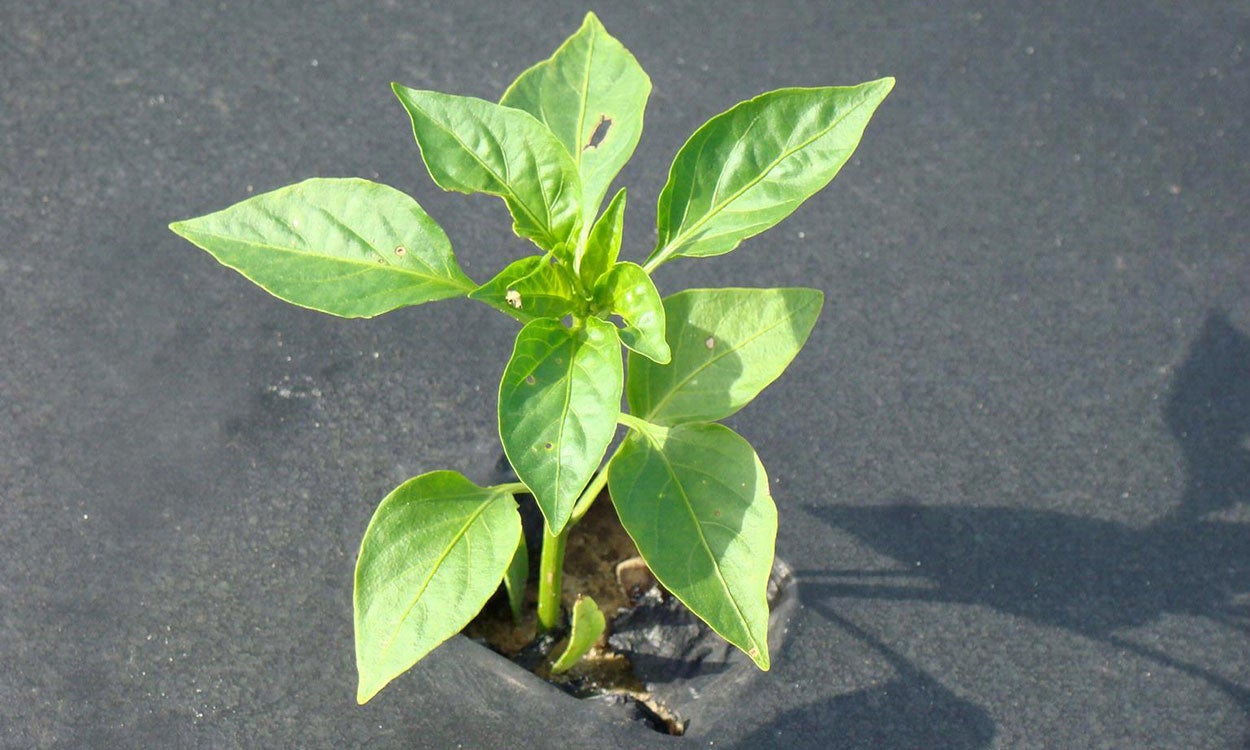
Spacing: Pepper plants should be spaced 12-to-18 inches apart.
Site Selection: Peppers need 8 hours of sun per day. Windbreaks can provide better plant growth and yield. Do not plant where related crops, such as tomatoes, eggplant, or potatoes were planted the previous year.
Transplants: If you purchase transplants, examine them carefully to make sure they are free of insects and diseases (healthy looking with no brown or yellow spots on stems or leaves). Plant transplants outside after the chance of frost has passed, and nighttime temperatures stay above 45°F (Figure 3). Protective structures, such as row covers, wall-of-waters, hot caps, etc., can be used to protect against cooler temperatures.
Plant Care
Watering: Soak the soil thoroughly when watering. On average, they will need an inch of water per week, coming from rain and/or from irrigation. While peppers need a moist soil, a soggy soil can lead to root rot, so check the soil before watering!
Mulching: Black plastic mulch and floating row covers may be used to warm the soil early in the season (Figure 4). An organic mulch, such as straw or lawn clippings (but don’t use grass clippings if herbicide has been applied), can help keep the soil cooler and moist during the hotter periods of the summer.
Weeding: Frequent, very shallow cultivation with a garden hoe or trowel will kill weeds before they become a problem.
Fertilizing: Use a starter fertilizer when transplanting. Apply supplemental fertilizer after the first flush of peppers is set. In most garden soils in South Dakota, only a nitrogen source will be needed. If growing in containers with other kinds of growing media, a full-spectrum fertilizer may be needed. Fertilizers marketed for tomatoes will work well; or look for ones that contain calcium (Ca) and magnesium (Mg) in addition to NPK (nitrogen, phosphorous & potassium). If compost and/or aged manure is used, these additional nutrients will not be needed.
Pests and Diseases
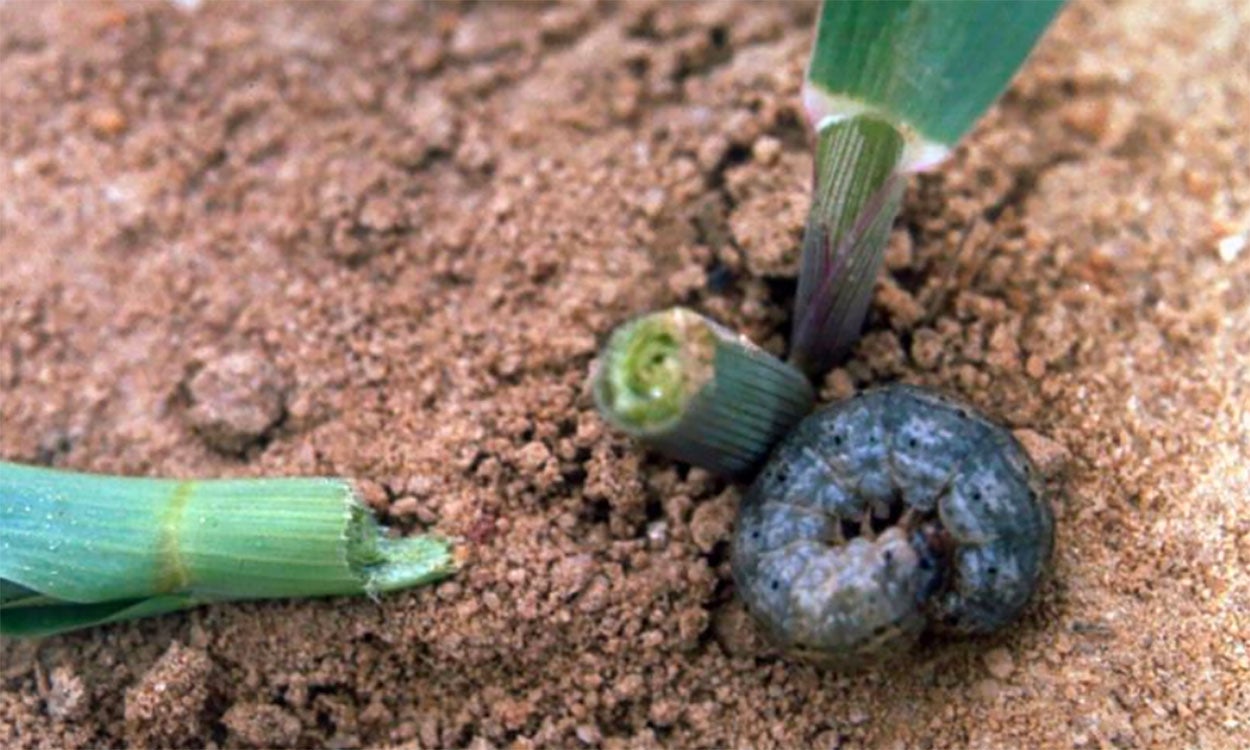
Minor Pests
- Cutworms: Cutworms chew stems at the soil line, leaving the severed tops uneaten (Figure 5). If you have had problems in the past or begin to observe cutworms, placing cardboard collars around new transplants can help protect them.
- Aphids: Accumulation of aphids on the underside of the leaves can sap the plant’s strength. Start treatment by gently crushing the aphids with your fingers, washing them off with a hose, and/or insecticidal soap. If you observe lady bugs in the vicinity, they will likely control the aphids for you.
Major Diseases
- While there are several diseases that can attack peppers, there are none that are consistent problems in our state.
- If your peppers are not thriving, contact SDSU Extension for help with diagnosis and possible treatments.
Minor Problems
- Blossom End Rot: Blossom End Rot is caused by uneven soil moisture. Blackened, leathery spots appear on fruit bottoms. If growing plants in containers or raised beds without our native soils, ensure that the growing media contains a calcium source.
Harvest
Harvest: Harvest peppers when they have reached a usable size and color. Cutting fruit from plants prevents injury to the plant and possible subsequent disease infections.
Wear gloves and avoid rubbing eyes when picking hot peppers.
Average Yield: 80 fruit per a 10-foot row.
Storage and Preparation
Storage: Store peppers in a relatively cool and humid place with temperatures around 45°F.
Cooking Tips: For information on preparing peppers, see Bell Pepper: Pick it! Try it! Like it! Preserve it!.
Nutrition Facts: Fat free, cholesterol free, low sodium, very high in vitamin C, good source of vitamin A and a good source of beta-carotene.
